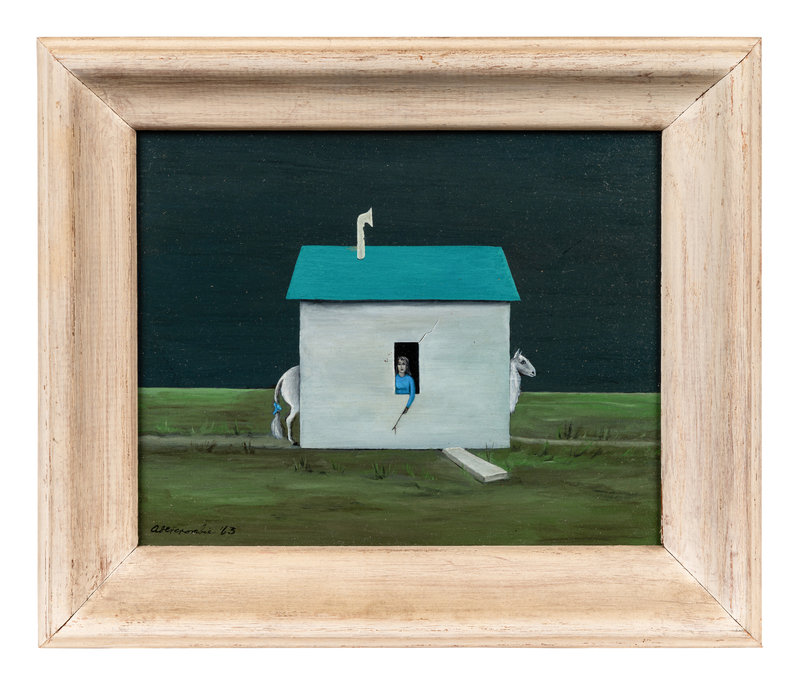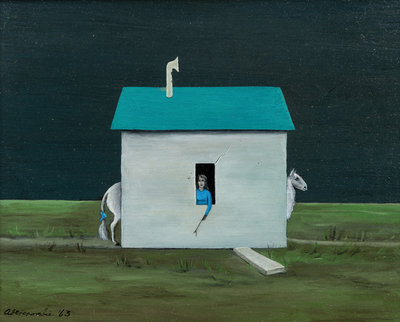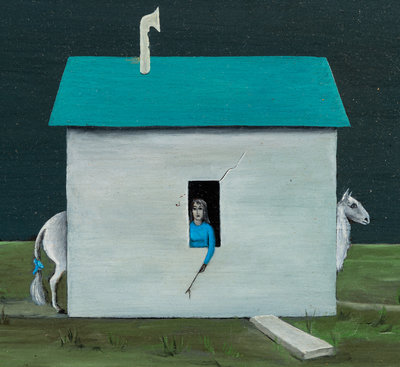Condition Report
Contact Information
Auction Specialist
Lot 50
Lot Description
We are grateful for the research conducted by Susan Weininger, Professor Emerita, Roosevelt University.
Provenance:Hugh Cameron, Benton Harbor, Michigan
Thence by descent to the present owner
Exhibited:
Chicago, Illinois, Hyde Park Art Center, Gertrude Abercrombie, A Retrospective Exhibition, January 28 - March 5, 1977, no. 79
Chicago, Illinois, State of Illinois Art Gallery, Gertrude Abercrombie, March 18 - May 17, 1991 (also traveled to Springfield, Illinois State Museum, July 28 - October 15, 1991), p. 95 (as Untitled)
New York, New York, Karma, Gertrude Abercrombie, August 9 - September 23, 2018 (as Station and Shed)
Literature:
Robert Storr, Susan Weininger, Robert Cozzolino, Dinah Livingston, Studs Terkel, Gertrude Abercrombie, New York, 2018, p. 445, illus. (as Station and Shed)
Lot Essay:
A Blue Ribbon Horse
Untitled (Stallion and Shed) is a spare image of a shed with a window through which we see a female figure, representative of Abercrombie. The head of a horse emerges from the right side of the building, while the tail end of the horse is seen on the left. This minimal scene partakes of the surreal and humorous qualities often included in many of Abercrombie’s works. For example, in Screen, Shadow, and Cats (1950, Illinois State Museum, Springfield) the head of a black cat emerges from the right side of a large screen while the rear of the cat follows behind on the left. In a slightly more complicated version of the split animal, in Blue Screen (1945, formerly Maurer Collection) a cat emerges from behind the screen in a room, while a cat disappears behind the screen in a painting on the wall. With its green, grassy ground and dark backdrop, the austere setting of the present artwork depicts limited details, including a narrow path that leads to and from the shed where the horse/s presumably would enter and exit, and a curved chimney pipe on the roof.
While horses and simple architectural structures are common in Abercrombie’s work, this is a unique combination of familiar elements. The white horse in Abercrombie’s world is sometimes a reference to the ideal partner. In this case the woman is situated in the center between the divided animal, presiding over a broken relationship. It may be significant that her divorce from Frank Sandiford was made official in 1964. As always, the artist is powerful and in charge.
The composition is thoughtful and skillfully balanced, with the protagonist in the center, her blue dress echoed in the blue ribbon on the tail of the horse. The figure holds a branch shaped liked a dowsing rod, a detail that references Abercrombie’s love of magic; its downward angle resonates with the upward angle of a subtle crack in the façade. The odd, curved pipe emerging from the ceiling of the shed is balanced by the diagonally placed stone in front of the building. The brilliant turquoise, a color Abercrombie favored, draws the eye, and links the parts of the painting. Done with care, the separate elements join magic, mystery, and humor into one composition.









